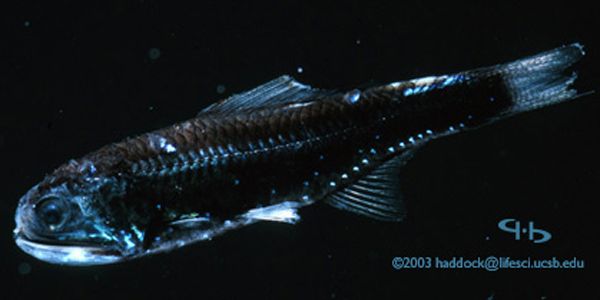
Deep-Sea Lanternfish Eat Tons of Plastic

Plastic is the dominant trash in the ocean, and has been found just about everywhere people have looked, from the supposedly pristine Antarctic seafloor to the Mariana trench, the deepest point on Earth. But a recent survey of plastic in the Great Pacific Garbage Patch and elsewhere found less than expected. "We were expecting values in excess of one million tonnes [1.1 million tons] of plastic, and only found [11,000-33,000 tons] of plastic," said Carlos Duarte, director of the University of Western Australia Oceans Institute, in a recent presentation. Somewhere, the plastic is being lost.
But where is it going? One place it's ending up is the stomachs of lanternfish, which are the dominant bottom-dwelling fish in the gyres, or rotating ocean currents, where much of the plastic is found, according to the news site Quartz. Many of the plastic bits are the same size as the fish's food and are mistakenly swallowed. Duarte found as many as 83 chunks in some of the fish.
Here is Duarte's presentation. He begins talking about lanternfish at 31:15.
Email Douglas Main or follow him on Twitter or Google+. Follow us @livescience, Facebook or Google+.
Sign up for the Live Science daily newsletter now
Get the world’s most fascinating discoveries delivered straight to your inbox.












